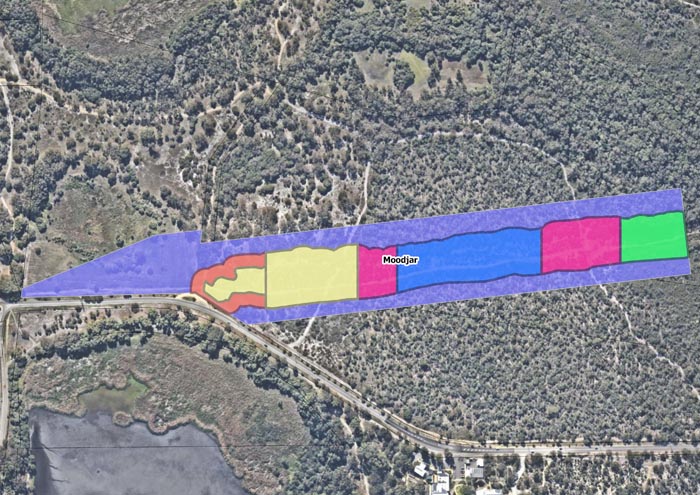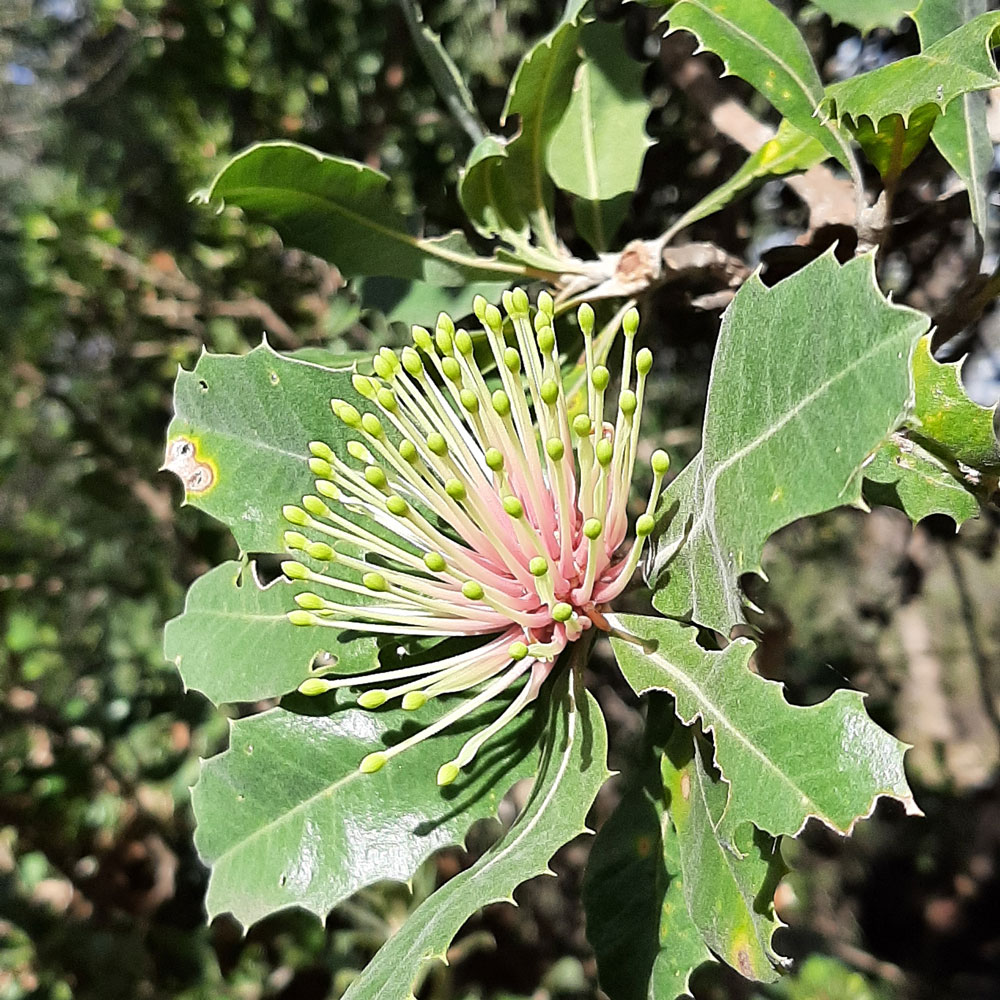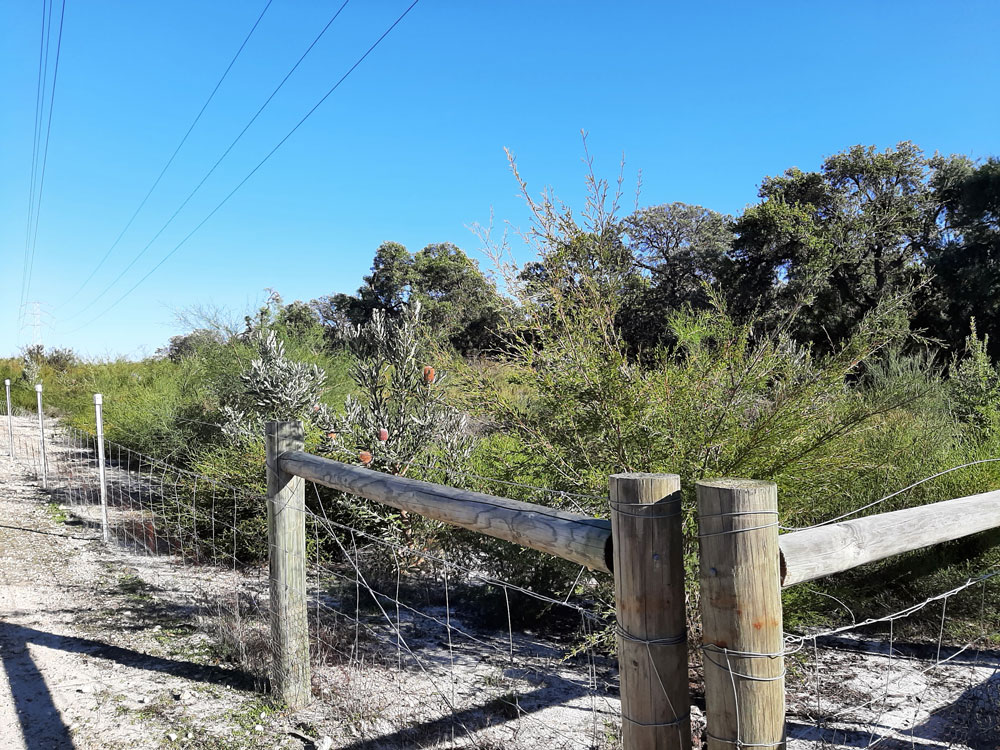A giant Moodjar WA Christmas tree (Nuystia Floribunda) stands near the crossroads of sandy paths. This hemiparasitic tree lives off neighbours, connected to their roots underground. It is a good metaphor for the interconnectedness of life, especially in the wetlands. Moodjar is important to Nyungar people and associated with the spirits of the departed. This site is close to an important Nyungar men’s ceremonial area. Looking west from Moodjar along the corridor, dwutta (prickly barks) can be found on a slight ridge. While the soil often looks dry, the presence of holly-leafed banksias shows that water is higher in the profile here. Alongside native bracken fern, the invasive weed arum lily crowds the cooler, wetter areas. Koolbardi (magpie) are often seen at this crossroad and nearby splendid blue wrens flit between the spearwood bushes. The triangular shaped pits of quenda diggings can be found, but so too rabbit droppings. Five species of microbats are known in the area and the rare Perth Slider is occasionally seen.
Moodjar


Holly-leafed banksia (Banksia ilicifolia) flower.
In the banksia woodland between the Moodjar crossroads and Hope Road was the site of an Australian Women’s Army Service (AWAS) camp during WWII. Its approximate location was north of Hope Road from where WA Wildlife is today. The auction of its materials had been advertised in The Sunday Times, just weeks after the end of WWII in 1945, but so little remains of this camp that an archaeological survey was needed to definitively identify its location. In 2017 at the prompting of Bibra lake residents, a UWA archaeology field school found the location of hardstands, pathways, a toilet/ablution block, a septic tank and other remnants of the former camp. A photo of AWAS personnel near a distinctive fallen jarrah tree, that remains to this day in the bush, was a key piece of evidence used to finally link the presence of the AWAS to this particular site. In Eileen Tucker’s book on the AWAS, the Bibra Lake camp was remembered for the thick bush, unusual wildflowers and “bright orange bunches of flowers on the Christmas tree”.
The east/west sandy path dates from the erection of electricity towers in 1953 but despite the disruption and surrounding suburban development, much of the bushland had survived or regenerated when the long-planned Roe Highway project started in 2016. Clearing for section 8 was well underway when equipment started to move downslope toward this site at end of January 2017. Determined to slow the pace of clearing and protect the Moodjar trees, protestors cemented their arms into heavy drums and thumb-locked themselves to trees in the path of the clearing, halting the work for hours while arrests were made. While their actions bought the controversy to the attention of a national audience, bulldozers continued down the corridor, struggling through the damp soil after an unusually wet summer and causing concern about the spread of dieback.

Western bearded dragon (Pogona minor)

Rabbit-proof fencing of revegetation at Moodjar.
Following the cessation of the clearing in March 2017, local people co-operated to keep temporary construction fencing upright to protect the damaged land. Later, the Rehabilitating Roe 8 project installed rabbit-proof fencing to assist natural recovery and shield rehabilitation plantings. In djeran (autumn in the Nyungar Six Seasons), several species of banksias can be seen in the rehabilitation zone again – perhaps providing new hosts for the ancient Moodjar tree.
